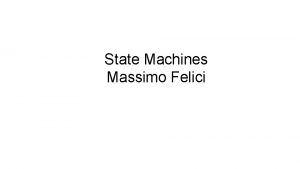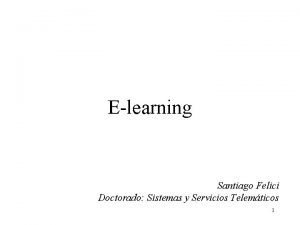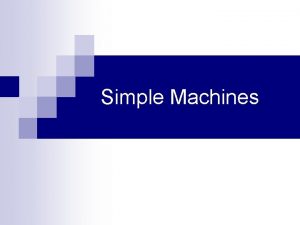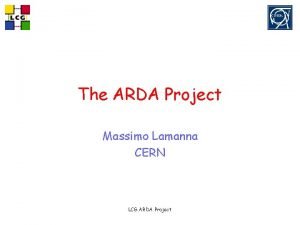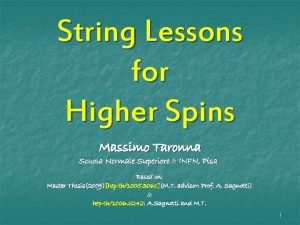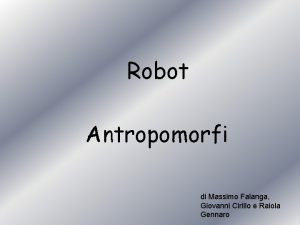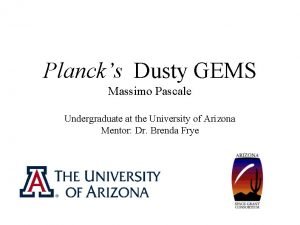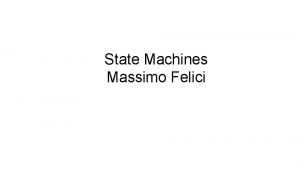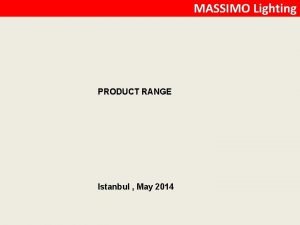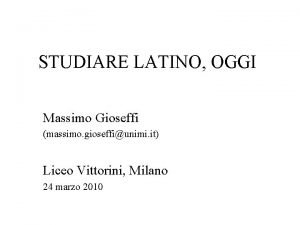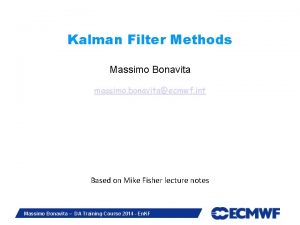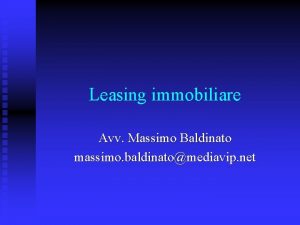State Machines Massimo Felici Slide 1 State Machines













- Slides: 13

State Machines Massimo Felici

• • • Slide 1: State Machines Sequence and Communication Diagrams show objects interact to meet some system requirements. They lack information on how the system decides what is the right thing to do. They correspond to scenarios and are decision free. There may bee many sequence or collaboration diagrams for one Use Case. The choice of how to react (that is, which scenario is appropriate) depends on a state. State Machines or Statechart Diagrams are based on the statechart notation called Hi. Graph. Statechart Diagrams are nite state machines with some extra mechanism to capture the meaning of transitions.

Activity vs. State Machines • In UML semantics Activity Diagrams are reducible to State Machines with some additional notations • In Activity Diagrams the vertices represent the carrying out of an activity and the edges represent the transition on the completion of one collection of activities to the commencement of a new collection of activities • Activity Diagrams capture high level activities aspects • In State Machines the vertices represent states of an object in a class and edges represent occurrences of events

Slide 2: Activity vs. State Machines • • The additional notations capture how activities are coordinated. In particular, it is possible to represent concurrency and coordination in Activity Diagrams. • Objects have behaviours and states. The state of an object depends on its current activity or condition. A Statechart Diagrams shows the possible states of the object and the transitions that cause a change in state.







Example ( A Simple Microwave Oven) 1. Select the power level 2. Input the cooking time 3. Press start 4. Safety: the oven should never operate when the door is open


 Massimo felici
Massimo felici Santiago felici
Santiago felici è tanto bello essere amici giocare insieme sentirsi felici
è tanto bello essere amici giocare insieme sentirsi felici Eadpcmg
Eadpcmg Valentina felici
Valentina felici Heel and toe polka meaning
Heel and toe polka meaning Salesforce 101: introduction to salesforce kurs
Salesforce 101: introduction to salesforce kurs Watch is a simple machine
Watch is a simple machine X^2 + 25 factored
X^2 + 25 factored Massimo lamanna
Massimo lamanna Massimo taronna
Massimo taronna Massimo falanga
Massimo falanga Massimo pascale
Massimo pascale Massimo guidolin
Massimo guidolin
